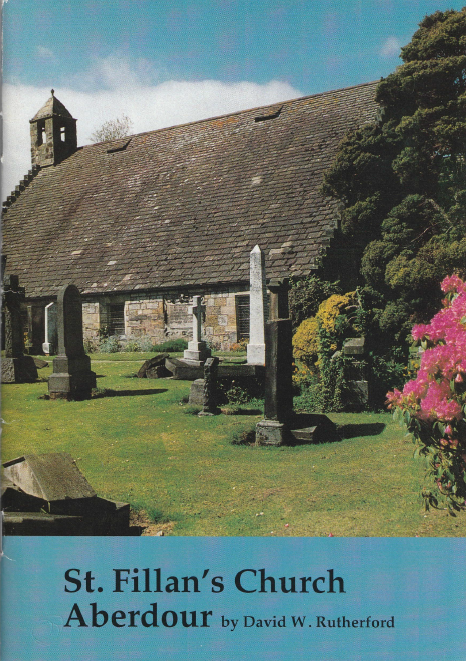History
St Fillan’s – The Early Years
St Fillan’s Church is one of the finest examples of simple Norman architecture in Scotland. To the south it overlooks Aberdour Harbour, north and west it is sheltered by the high wall of Aberdour Castle garden and to the east what was the Castle kitchen garden. As early as 1390 St Fillan is mentioned as the patron saint of the church.
Entrance to the church and its old cemetery is from Hawkcraig Road along Kirk Wynd. At the top of the Wynd, on the right is a door to the Castle grounds, above which the monogram of William, Earl of Morton and his wife Lady Anne, dated 1632. Further down the Wynd, on the left, is a collection of badly weathered old gravestones, some dating from the seventeenth century.
Inchcom Abbey dates from 1123 and was in the parish of Aberdour, it can be assumed that the present church, or rarther a significant part of it dates from 1123, therefore it is one of the oldest churches in Scotland.
1179 saw a Papal Bull confirming Inchcolm Monastery’s possession of Aberdour Church and other churches in the area. This is the earliest reference to Aberdour.
Aberdour’s earliest known priest was Serlo circa 1214. He was probably a canon of Inchcolm, as the monastery had the right to appoint its own priests to the churches in its possession.
In the early days the church was used for purposes other than worship, as noted in one of the monastery’s charters (9 November 1273):
“On the Thursday after the Feast of St Leonard, in the parish church of Aberdour, the bishop of Dunkeld and others settled a dispute between Simon of Balram (a local farm) and Inchcolm Abbey regarding the land of Leys. Simon gave up his claim to the disputed pasture land, receiving 40 marks in return.”
Initially St Fillan’s consisted simply of a nave and the chancel, lit by deep splayed windows and remains much as it was in the 12th century. Sockets for the rood screen can still be seen.
The dedication to St Fillan probably came about through the influence of Robert I (the Bruce), who gave Aberdour to his close friend and supporter Thomas Randolph Earl of Moray. St Fillan was the king’s favourite saint and is credited with helping the Scots win the Battle of Bannockburn in 1314.
In the 15th century, the church was enlarged by the addition of the south aisle. This involved an arcade supported by the three pseudo-Norman pillars and lowering the floor to its present level.
Before the Protestant Reformation in 1560, and the huge changes it brought, information about St Fillan’s Church is scant. During the sixteenth century the gable walls were raised and the pitch made steeper, the large Gothic window inserted and possibly the present porch entrance added.
The belfry is dated 1588.The original bell disappeared when being recast and was replaced in 1926 with the bell from the ruined St Bridget’s Kirk at Dalgety.
This information was provided by the Aberdour Heritage Centre.

The booklet St. Fillans Church, Aberdour by David W Rutherford is available in the church, price £3.
The drawings were made in 1884 and are taken from the book Pre-reformation churches in Fife and the Lothians by J Russel Walker, Architect 1888 available here and the Corpus of Scottish Medieval Parish Churches available here.
Note, the date 1178 rather than 1123 is used as “It appears that the church may have formed one of the properties assigned to the canons by King Alexander at his foundation of their monastery in the early 1120s. There is, however, no surviving record of the original grant and it is only in March 1178/9 in a bull of Pope Celestine III that the abbey’s possession of the church of Aberdour was confirmed.”
Learn More
History
The Early Years
Restoration
Stained Glass
Inchcolm Abbey
Church Hall
The Hewitt Brothers







